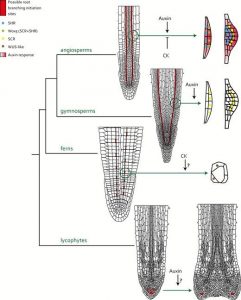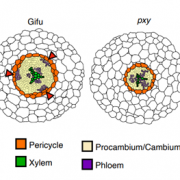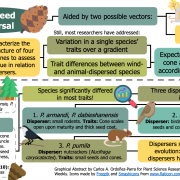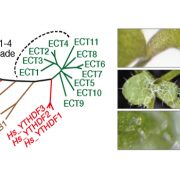Review: The evolution of root branching: increasing the level of plasticity (J Exp Bot) ($)
 Without roots, plants are unable to gain height due to poor anchorage and are less fit for survival outside of humid environments. Root branching allows plants to better adapt to their environmental conditions and improves their capability to forage for water and nutrients. In this review, Motte and Beeckman explore major differences in the way branching occurs between different clades and goes underground to provide an overview of the root architecture and plasticity of the most important plant groups. For example, lycophytes, the most ancient land plants with roots, only branch at the root tip, whereas ferns are able to form roots laterally in a fixed pattern along the main root. In seed plants, lateral roots can be produced at almost any position along the main root, allowing them to grow in very diverse environments. In this interesting review, Motte and Beeckman also discuss lateral root formation in angiosperms, look for conservation within seed plants, and speculate on the molecular components that could be considered as original root branching regulators. (Summary by Katie Rogers) J. Exp. Bot. 10.1093/jxb/ery409
Without roots, plants are unable to gain height due to poor anchorage and are less fit for survival outside of humid environments. Root branching allows plants to better adapt to their environmental conditions and improves their capability to forage for water and nutrients. In this review, Motte and Beeckman explore major differences in the way branching occurs between different clades and goes underground to provide an overview of the root architecture and plasticity of the most important plant groups. For example, lycophytes, the most ancient land plants with roots, only branch at the root tip, whereas ferns are able to form roots laterally in a fixed pattern along the main root. In seed plants, lateral roots can be produced at almost any position along the main root, allowing them to grow in very diverse environments. In this interesting review, Motte and Beeckman also discuss lateral root formation in angiosperms, look for conservation within seed plants, and speculate on the molecular components that could be considered as original root branching regulators. (Summary by Katie Rogers) J. Exp. Bot. 10.1093/jxb/ery409









